THE BEST THINGS TO DO IN THE YORKSHIRE DALES
God’s Own Country. So goes the description that all proud Yorkshire folk love to remind us of. On the map of the UK, Yorkshire is split into four separate constituent counties relevant to their compass location. North, South, West and East (Riding of) Yorkshire all have their own unique identities. Yet it is without doubt the ceremonial county of North Yorkshire that truly lives up to the “God’s Own Country” nickname. That influenced mainly from the large number of Cistercian Abbeys located here until the dissolution by Henry VIII. And of course the many miles of unspoiled greenery too.
This county represents an area so large it is almost equal to the other three counties combined. Many of the most well preserved historic towns stand side by side with the great outdoors. The presence of not one but two National Parks in the boundaries of North Yorkshire is testament to that. The Yorkshire Dales or the North York Moors? Can’t decide where to go? Then why not mix and match the two. A great combination of rural life and town life.
Spending an average of five days at each location, I want to inspire you with the best itineraries to make the most of each. Starting first with the Yorkshire Dales and plenty of waterfalls, waterways, abbeys, creamy cheese and award winning gardens.
YORKSHIRE DALES NATIONAL PARK
The rolling hills in which sheep graze contentedly surrounded by grand limestone rock formations have attracted visitors for hundreds of years. Boasting some of the most dramatic geological formations and the most calming waterfalls and hiking trails, the first such place to be designated National Park status in the UK continues to delight visitors of all ages.
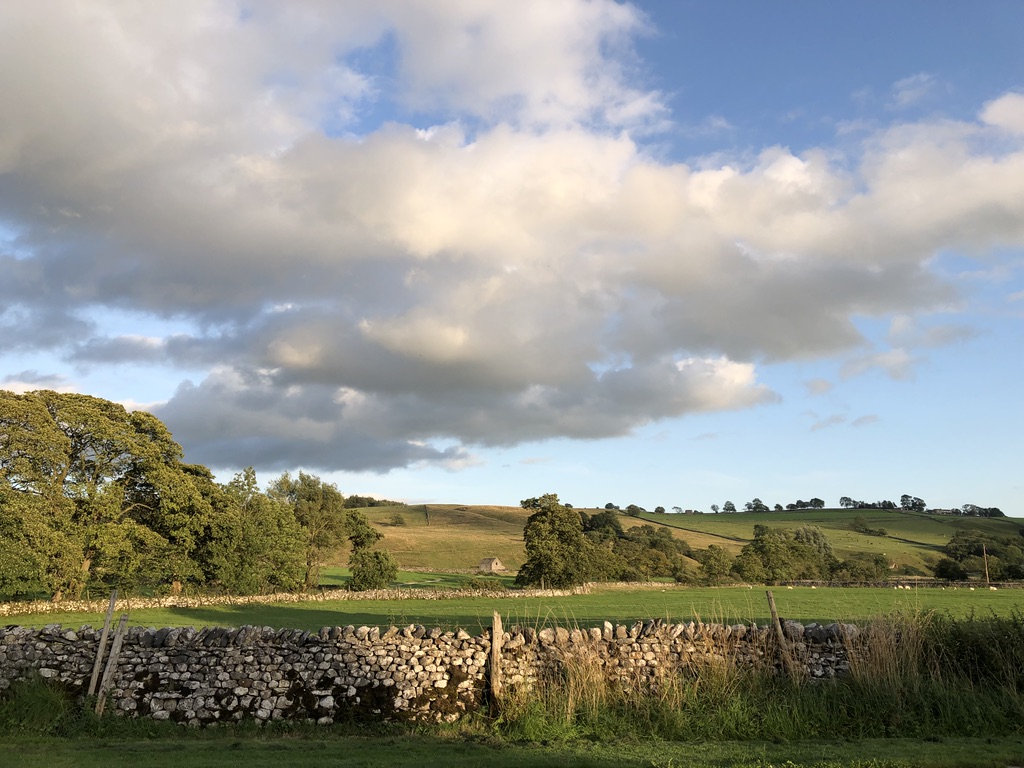
If you stay in Harrogate then you will be very much best placed to get the best of both worlds. Many other towns are a short railway journey away, and if you take your car as well then you will be best placed to have the freedom to explore.
Here are my choices of essential places to visit within the boundaries of the Yorkshire Dales National Park.
STAY IN – HARROGATE
The delightful spa town of Harrogate is the ideal base from which to explore the Dales. Right on the outskirts of the Nidderdale Area of Outstanding Natural Beauty that leads to the official boundary of the Yorkshire Dales, Harrogate has always had an image of perhaps being the prim part of the North of England. A regular winner of categories in the annual RHS “Britain in Bloom” awards, you can get a feeling for the green-fingered grandiose of the town when you see the floral displays in the main square on Parliament Hill by the war memorial. Further evidence of this lays in the grand Valley Gardens and of course the RHS Harlow Carr, both of which are indeed connected by a long path.
The Crown Hotel is one of the best places to stay in Harrogate with its location at the crossroads of the historic Montpelier Street. The Regency style building next to the roundabout is in a strategic location close to the main high street, the gardens and other attractions.
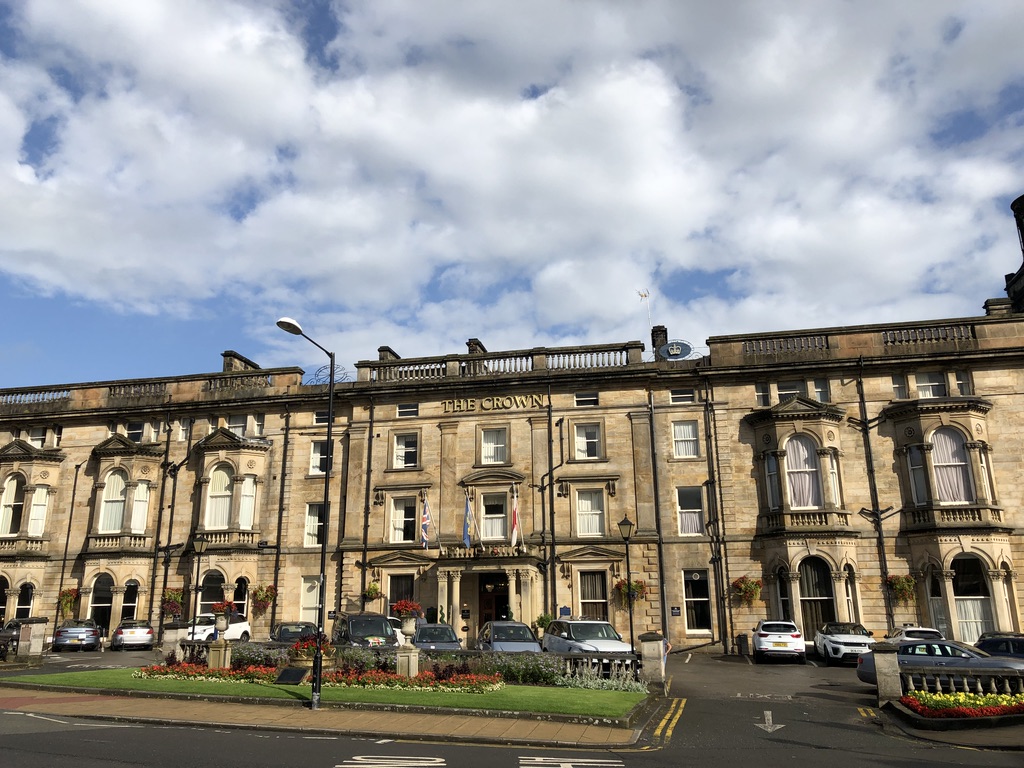
Harrogate may not be brimming with as many spas as it did in its Victorian heyday but the heritage is still intact with the Royal Turkish Baths. Different treatment programs are available at different prices. You can also learn more about the town’s spa history at the Royal Pump Room Museum. An exhibition of nostalgia in one of the former spas recognisable by its octagon shaped roof.
Perhaps no trip there could ever be complete without an afternoon tea at Betty’s. This very Harrogate institution has been welcoming visitors since the 1920s and such is its popularity that over the course of time other branches opened elsewhere in the county.
KNARESBOROUGH
Little more than a 10-minute car journey from Harrogate is picturesque Knaresborough. Dominated by the tall railway bridge over the River Nidd, Knaresborough is still a thriving market town complemented with beautiful riverside trails.
On a clear day there are few better ways to appreciate the town then by hiring a rowing boat along the Nidd. In the main town centre there is a regular market on Wednesdays. In addition it is also worth looking at the remains of Knaresbrough Castle, abandoned since the English Civil War.
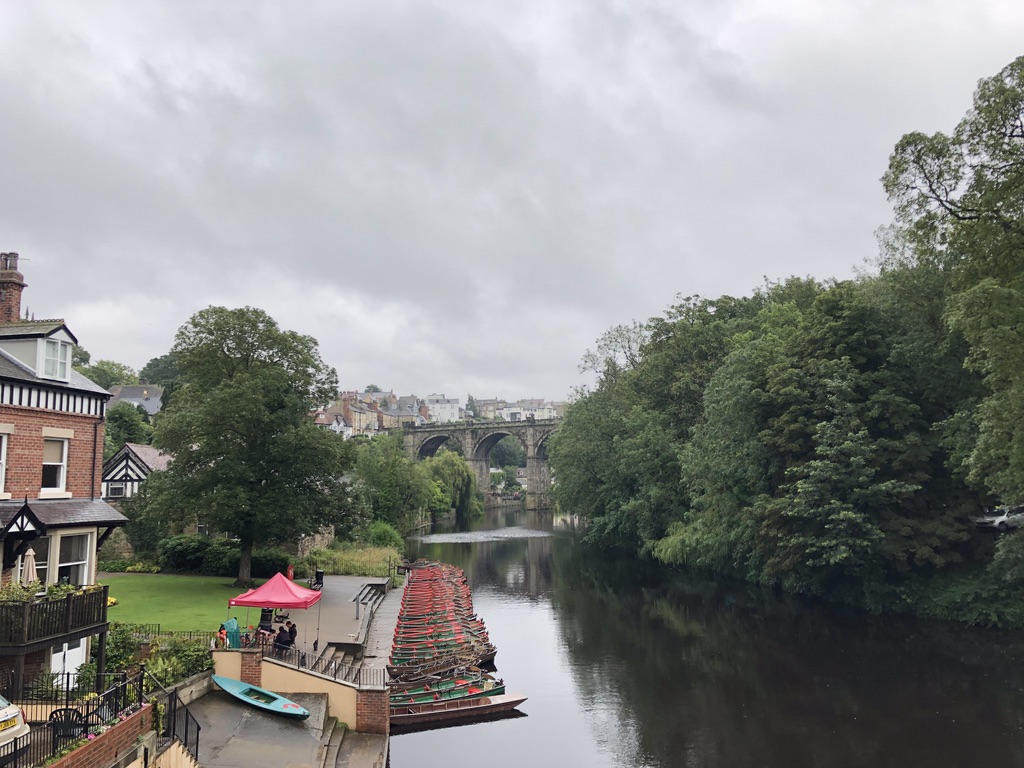
Alongside the River Nidd is the path leading to Mother Shipton’s Cave. A route in operation since approximately the 1630s and possibly England’s oldest official tourist attraction. This specially laid out trail leads you towards a spooky looking cave where legend has it the mysterious witch-like Mother Shipton lived. A labyrinth of limestone rocks and cascading waterfalls, it seems some objects hanging over the cave entrance have been turned to stone here. The doings of a wicked witch? Not really but merely visitors who decided to leave an object behind (for good luck?) hanging in sight of the water flowing. After almost a year of continuous sulphur water covering it, you have your answer! Although I feel bad for the abandoned neglected teddy bears.
Perhaps the quirkiest side to Knaresborough has to be the annual Bed Race, which takes place on the second Saturday of June every year. One person lies down or sits in something that at least resembles a bed and the others push. Like a mini obstacle course going up the road and through the river, it is all in aid of local charity.
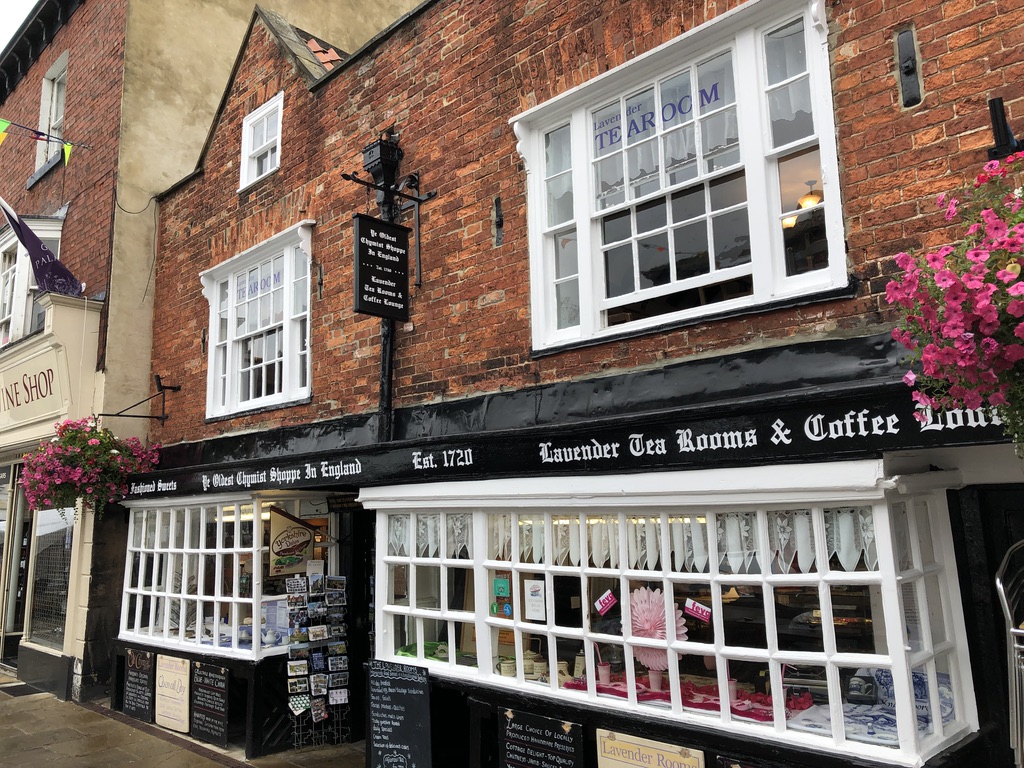
RIPON AND THE GROUNDS OF STUDELEY ROYAL PARK AND FOUNTAINS ABBEY
Another pleasant place to visit is the town, or should I say city, of Ripon. Despite a population smaller than a number of UK towns (such as Harrogate), Ripon is a city thanks to the presence of its magnificent Gothic cathedral with its Norman and Romanesque heritage still evident. Dating back to the 7th Century, Ripon Cathedral has taken on its current appearance since around the 11th and 12th Centuries. Its crypt tunnel and woodcarvings are said to have given Lewis Carroll inspiration for Alice in Wonderland. The “Alice” connection is also evident with some rather surreal tree sculptures in Ripon Spa Gardens, returning the compliment.
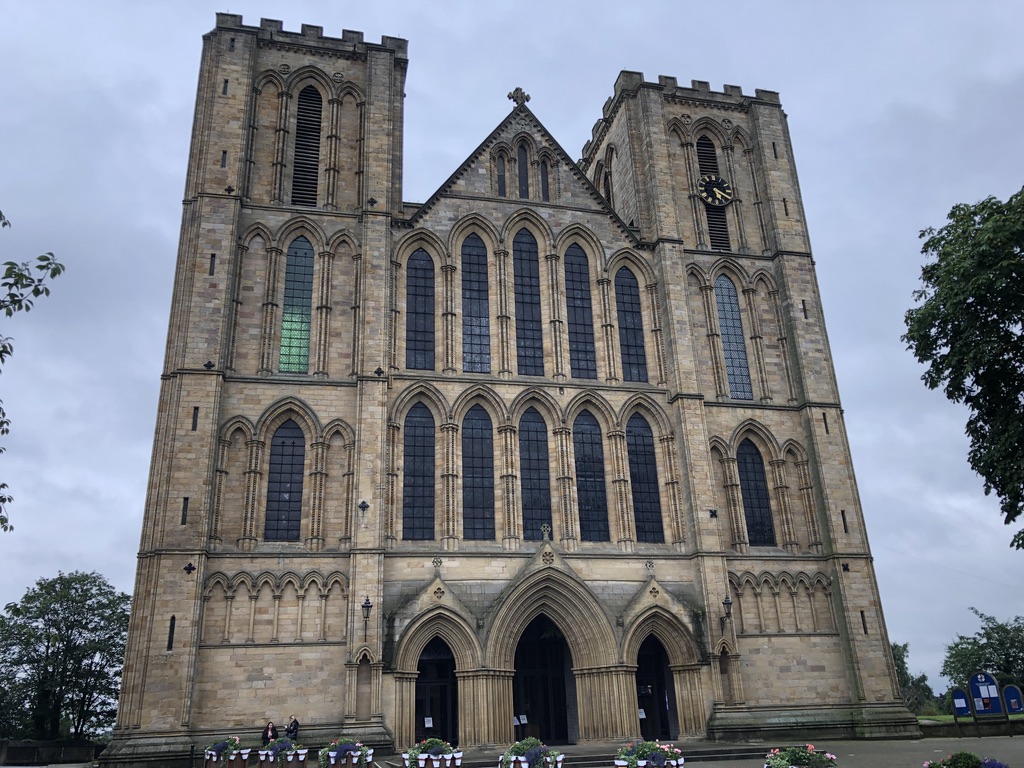
Every Thursday in Ripon is market day in the main square and like with many other places in North Yorkshire also prides itself in a number of independent cafes and shops. One of the endearing traditions of Ripon is the Ripon Hornblower, who sounds a horn every evening at 9pm whatever the weather all year round.
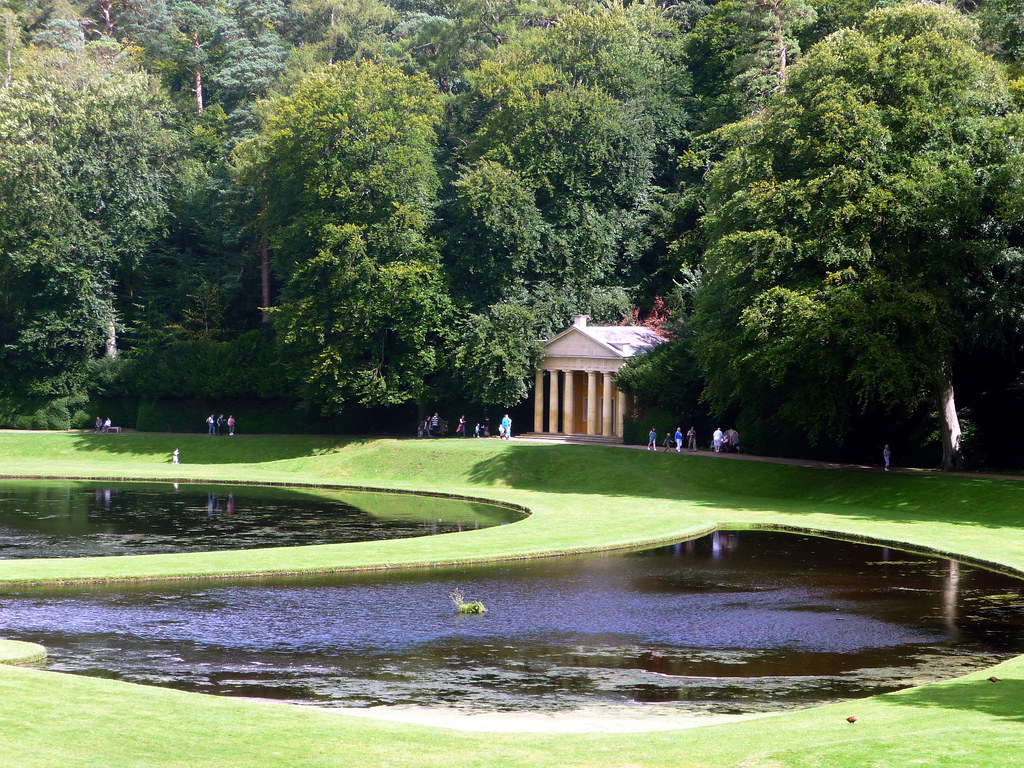
A short distance away is the UNESCO World Heritage Site of Studley Park and Fountains Abbey. The trail from the centre of Ripon takes about 90 minutes by foot or less than ten minutes by car. The Studley Park Water Gardens lead on various routes around the remains of Fountains Abbey. It is also home to a deer park where hundreds of different red deer and fallow deer and sika deer roam free. Look out as well for the interesting archictectural follies dotted around Studley Park such as the octagon tower and the temple.
HAWES AND WENSLEYDALE
The village of Hawes with its stone houses is perhaps the spiritual heart of the Yorkshire Dales. In the dale of Wensleydale, it is here that you will find the location of the creamery that produces the celebrated cheese from where it gets its name. Go inside and even see the cheese-making process as well as getting a taste of one of the creamiest cheeses you will ever find! Wensleydale has been forever popularised in the Wallace and Gromit Claymation series, and I can empathise with Wallace’s near inability to get by without said cheese.

The ruins of Castle Bolton are also in close proximity, and further on the tranquil Aysgarth Falls. This walk may take up to three hours from Hawes, traipsing through marked footpaths and maybe some muddy fields too. Waterfalls are a common feature of the Yorkshire Dales, meltwater since the end of the Ice Age cascading down rocks. Aysgarth’s feature is of water gently going down three different levels of limestone. Whilst the typical perception of waterfalls is of the loud sounds of the water at high speeds, Aysgarth Falls are something else. An almost more soothing sound.
MALHAM COVE AND GORDALE SCAR
The imposing curved limestone formation of Malham Cove and the stream running along is one of the most striking juxtapositions of the geology here. Centuries ago a waterfall did cascade down the steep incline here. The National Park Information Centre is a prime location to start exploring, either just Malham Cove or further on to Gordale Scar and Janet’s Foss.
Malham Cove may indeed be recognisable as a location from Harry Potter and the Deathly Hallows. Reaching to the top is not as daunting as it looks, there is a trail set out although do take care going up rocks. Once at the top, the views are very rewarding and provide you with one of the best vantage points.
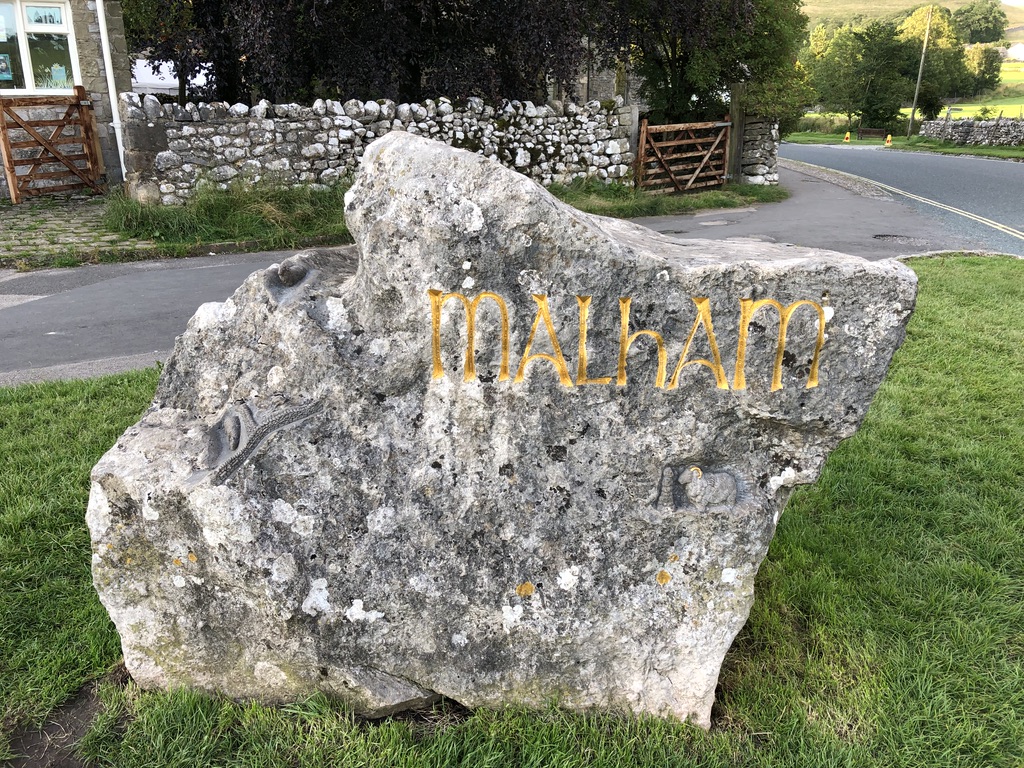
Further along the trail or accessed from a different point is Gordale Scar. Scaling this point can be a bit more challenging considering the waterfall flowing in between the rocks. It is possible but in truth recommended to the more experienced hikers and climbers.
The other site known as Janet’s Foss is a more enclosed waterfall in a woodland area. Its name coming from Jennet, Norse queen of the fairies, said to have inhabited.
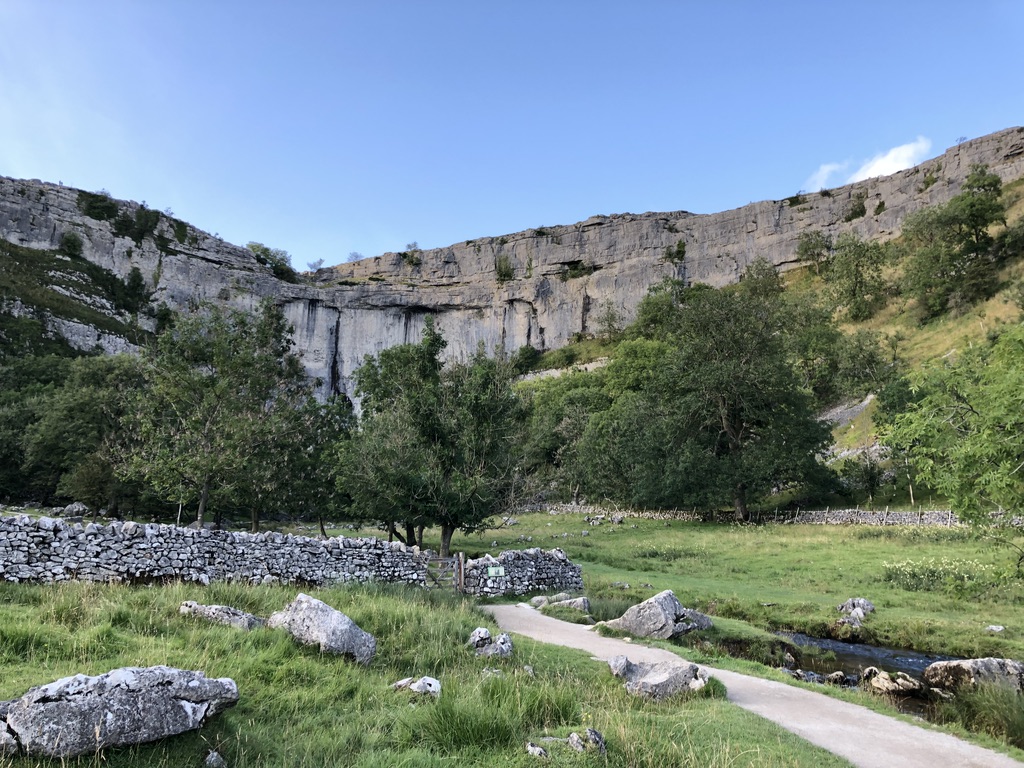
SKIPTON AND BOLTON ABBEY
Vying alongside Ripon for the unofficial title of “Gateway to the Yorkshire Dales” is Skipton.
A trip on a canal barge is an essential part of a visit to Skipton. Appropriately the town does hold an annual barge show in September. This waterway being part of the first arm of the Leeds and Liverpool Canal which is the second longest canal in the UK after the Grand Union Canal that links London with the West Midlands.

Another charming little town with a great community feel, Skipton’s cobbled streets and alleys give it its historical feel.
Overlooking the town is Skipton Castle, which has been a fortification in the town since Norman times. You can still see the remnants of a motte-and-bailey moat and the polygonal turrets typical of that period in British history. Also part of the grounds and included in your admission are the Skipton Castle Woods, like a little secret garden.
A short journey away from Skipton is the remains of Bolton Abbey. Another one of the great Yorkshire monasteries for your list.
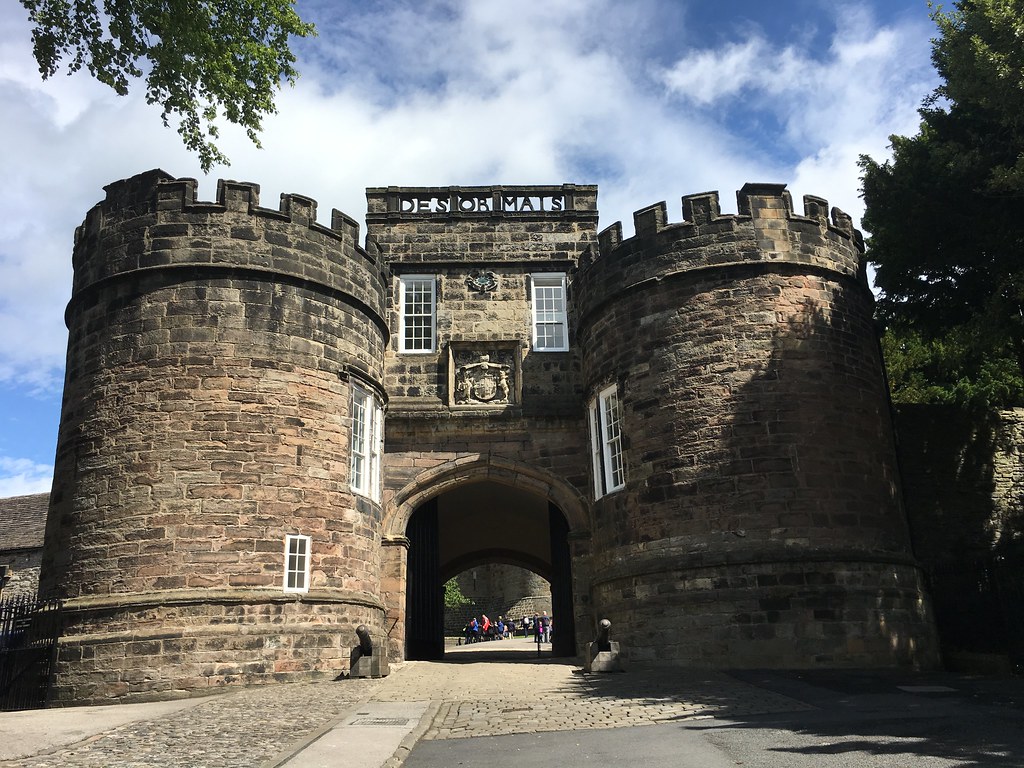
AND MORE TO COME…..
Those are just some of the best suggestions of places to see to get the most out of a visit to the Yorkshire Dales. Heading eastwards is the environs of the North York Moors National Park.